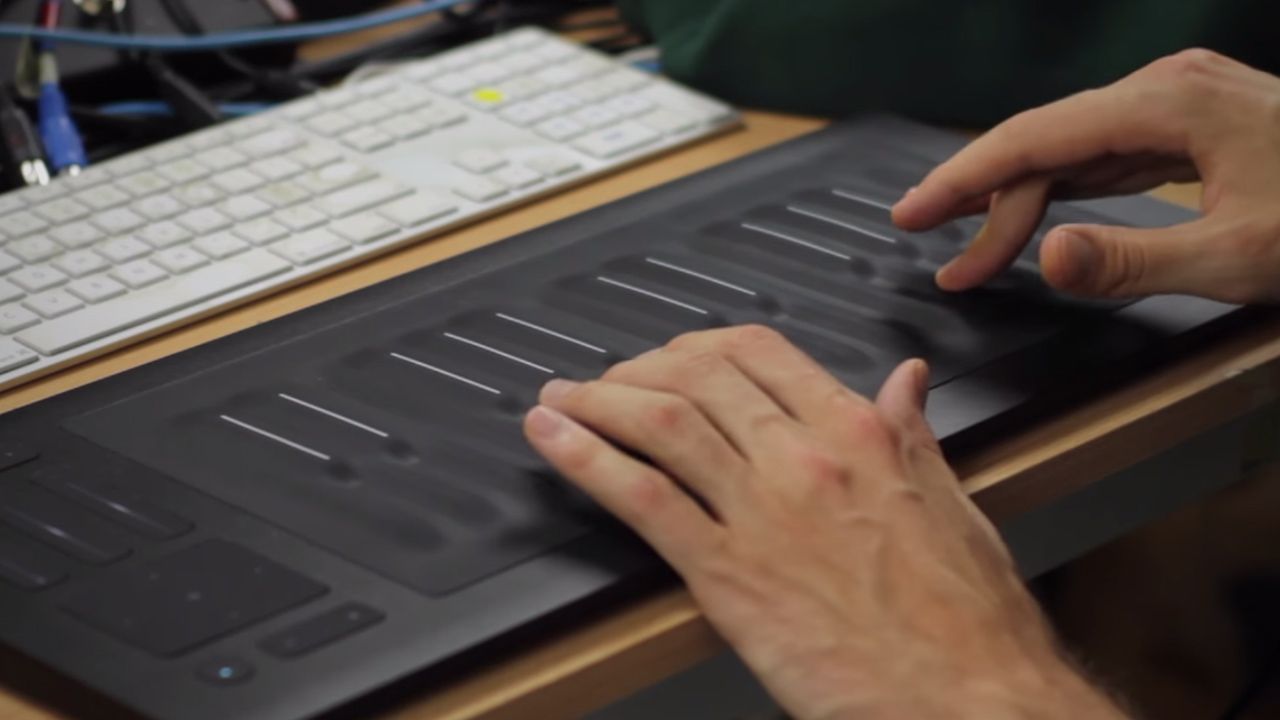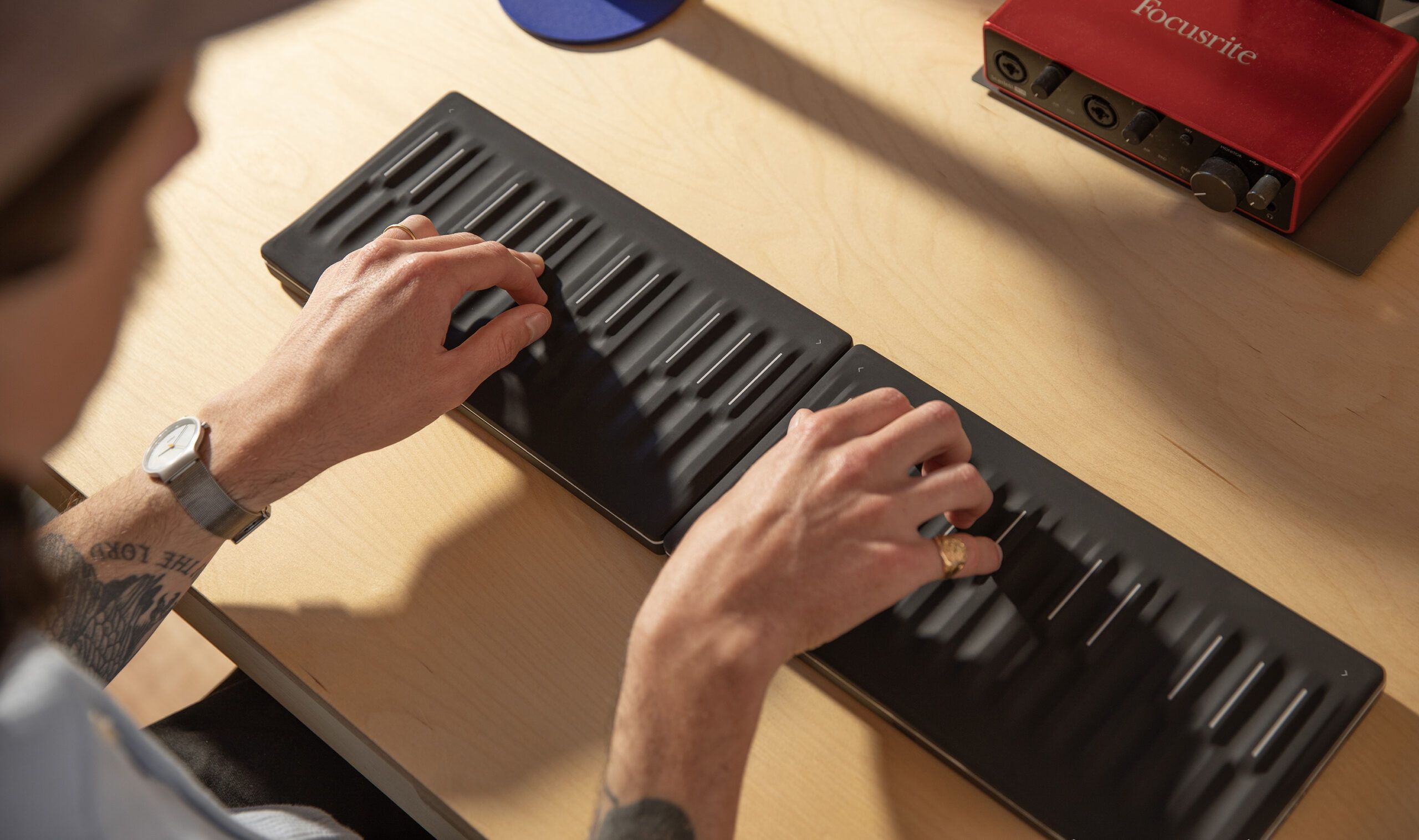Enter the Seaboard RISE, an exciting new take on the piano-based MIDI controller which – for the first time in a while – brings us a truly new input mechanism. At first glance it doesn’t look like much, an elegant black rectangle which would be more at home in an Apple store than your local music shop, but after close inspection it reveals itself as a notably innovative control surface.
Mad Zach’s Seaboard RISE Review
The Seaboard RISE’s magic is in its squishy, ribbed surface, which not only registers “notes” but additionally allows you to bend, slide, glide, twiddle, and bob your notes all around like a slippery acid piano.
Right out of the box I found myself creating melodies and progressions that would have been actually impossible with a normal controller. There was increased detail to organic dynamics, pitch movement/bending, and other-wordly modulations.
- Gear: Seaboard RISE
- Price: 25-key = $799, 49-key = $1,199
- Availability: Out now
In my opinion the Seaboard RISE as a product is cool, but the most exciting part is the surface technology. It’s a firm yet “gelatinous” surface which registers pressure, velocity, and location all at once. They’ve compressed these inputs into what they’re calling “the five dimensions of touch.” I know, it sounds cheesy, but the execution is pretty dang cool.
At heart, I’m more of a “percussionist” than a pianist, so I’m crossing my fingers that they integrate this technology into a pad based controller sometime soon!
The Five Dimensions of Touch:
- Strike – fancy talk for “hitting a note” – basic but essential, just like you would with a normal keyboard
- Press – aka: “pressure” – this is what happens after you “strike” – also known as “continuous pressure” – similar to what you’d find on Ableton Push or any controller with aftertouch
- Glide – allows you polyphonic and endless portamento on any note you press. You can either wiggle your finger side-to-side to create vibrato or glide seamlessly between notes. It’s even possible to glide between multiple notes independently and simultaneously. You can also run your finger along the top of the RISE and glide endlessly similarly to how you might play a theremin.
- Slide – a unique dimension which adds additional control based on how you slide up and down vertically on a given “key”
- Lift – another interesting input mode which creates a control parameter based on the speed at which you release a note
The Software – EQUATOR
The controller also comes with its own software, which is – for all intents and purposes – the only synth which currently works seamlessly with the RISE and its multitude of control inputs. You can hook up RISE with other synths (such as Kontakt and Omnisphere), but the setup otherwise is pretty complicated and not very streamlined.
However, the modulation capabilities with Equator are definitely sweet. I wasn’t too blown away by Equator’s tone but its hard to say if that is just the presets and my personal tone preferences speaking. I’m excited to see if other synth makers will adopt compatibility with “the 5D touch” concept. Equator’s strong suits seemed to be dynamic cinematic sounds (hyper-realistic strings, alien morph pads, etc.). As such, I imagine this would be an absolute weapon for movie or commercial soundtracks.
Seaboard RISE Tech Specs
Have questions or your own thoughts about the Seaboard? Let Zach know in the comments and he’ll respond in line.




![ROLI’s Seaboard RISE 2: seamless integration into the expressive world of MPE [REVIEW]](https://s11234.pcdn.co/wp-content/uploads/2023/11/Screenshot-2023-11-16-at-5.02.41-pm.png)




